
We go to New Orleans to speak with New York Daily News reporter Tamer El-Ghobashy. He reports from outside one of the main refugee centers in New Orleans–the Super Dome, where as many as 30,000 people sought shelter. [includes rush transcript]
- Tamer El-Ghobashy, journalist with the New York Daily News speaking outside the Super Dome in New Orleans, Louisiana.
- Jacquie Soohen, an independent filmmaker with Big Noise Films, speaking outside the Astrodome in Houston, Texas.
Transcript
AMY GOODMAN: Yesterday afternoon, we talked to New York Daily News reporter, Tamer El-Ghobashy. He was inside another of the main refugee centers in New Orleans, the Superdome, where as many as thirty thousand people sought shelter. He began by describing the situation around him.
TAMER EL-GHOBASHY: I’m waiting outside in waist-deep water outside the Superdome in downtown New Orleans where it’s starting to rain. The streets are much emptier today than they were last night. People have been walking through the water on the highways, and at times sleeping on the highways, two, three day journeys just to walk four miles to the Superdome, just to give you an idea of how difficult it is to get around here. Right now they’re trying to coordinate the evacuation of the Superdome onto buses that, if I understand correctly, are taking people to Houston. It’s not going well. The military police and the national guardsmen are overwhelmed by the number of people. The local New Orleans police are assisting, and it’s still not helping. There are throngs of people, easily in the tens of thousands, maybe forty to fifty thousand people, in my estimation, standing on this plaza trying to get to a very narrow area where they’re being escorted to the buses. I haven’t seen one bus leave yet. People are passing out and, you know, you have elderly and children and in some cases kids born two weeks ago. One man was assaulted by a group of people with metal bars for asking for a cigarette. He’s semiconscious, very agitated when he is conscious. It’s very difficult; they can’t do anything for him. Other citizens are just trying to help him out.
AMY GOODMAN: Can you describe what it was like when you got to the Superdome yesterday?
TAMER EL-GHOBASHY: The Superdome yesterday was — I guess by then it had been in service as a refugee center for about three days. It was — squalor is the only word I can think of to describe it. The bathrooms were not functioning because of overflowing toilets. There was human waste everywhere in and around the bathrooms. Inside the dome itself, these cavernous, very dark hallways populated with people sleeping on the ground. It’s a gigantic stadium. The seats were semi-full from one tier to the next, and people were also camped out on the artificial turf, the artificial grass turf. It was very dimly lit and very stifling. The smell was atrocious. People were terrified. There were rumors — I call them rumors only because I can’t verify them, but people were talking about at least four rapes, including the rape of children. People were talking about murders and assaults, and people were talking about newborn babies being born and dumped into the garbage and allegations of brutality by the military police and the national guardsmen. None of that can be substantiated because there is no one to talk to from the official side of things. They’re overwhelmed by the work they’re doing. However, regardless of the — whether these rumors are true or not, people believe them, and it’s contributing to the lack of security and extreme fear and nervousness in addition to the hunger and, you know, people that have just recently lost everything they have. I was speaking to people on — waiting to get onto the buses who — and I assume that they were leaving only to come back one day, but nine out of ten people I spoke to said that they were intending to start over elsewhere.
AMY GOODMAN: How do they feel about going from the Superdome in New Orleans to the Astrodome in Houston?
TAMER EL-GHOBASHY: Well, people were talking about they were now saying, you know, the belief amongst the refugees, as they have come to be known here, is that they were not going to be allowed to be in Houston, that Houston didn’t want them, so they didn’t know what to think. But I — you know, asking them: In the event that you end up in the stadium, in Houston, they said, “As long as they’re prepared for us,” and “Anywhere but here” was the kind of sentiment that they had.
AMY GOODMAN: What sense do you have of who is in charge at the Superdome?
TAMER EL-GHOBASHY: From what I can see and what I can tell, it appears as though the Army is in charge. I’m not sure if the efforts are being coordinated by the State Office of Emergency Management here, or the National Guard or what. It’s very difficult to know who is in charge, and very difficult to get anyone to — from the officials to speak with you. Somewhat understandably, their priority, as it should be, is to help these people and get them out of there. They’re having a hard enough time doing that.
AMY GOODMAN: Is there food and water?
TAMER EL-GHOBASHY: Scarce food and water, although I can see that it’s being brought in by military flatbeds and dump trucks. There are cases of water being brought in. Food is another issue. Yesterday at the Superdome, people were being provided with at least two meals a day consisting of these ready-to-eat meals that the army gives out, however, they said that they would be standing in line for well over two hours to get the meals and complained that children cannot really handle these ready-to-eat meals, not appetizing for the children, it seems, and the children — adults are having a hard time feeding the children hot water, although it is clean water, but it’s not cold, and it seems as though it’s taking its toll on the kids and the elderly the most.
AMY GOODMAN: We’re talking to Tamer El-Ghobashy, who is at the Superdome in New Orleans right now. Can you describe how you got into New Orleans yesterday?
TAMER EL-GHOBASHY: Yesterday we got into New Orleans by trying our best to circumvent the various police checkpoints along the main interstate and the surrounding larger arteries. With the help of some local folks, we were able to use back roads that were at that point unmanned by police. We were able to get into town that way. Having no internet and phone in New Orleans, we are forced to go back to Baton Rouge in order to transmit our reports and our pictures. I’m with a photographer by the name of Michael Appleton, but today we got in. They had — the back roads were manned. They were only letting in emergency vehicles according to them. We found a way by doing something rather unadvisable, but we got here.
AMY GOODMAN: What was that?
TAMER EL-GHOBASHY: Well, we drove on the levee for a portion of our trip
AMY GOODMAN: What is it like to drive on the levee.
TAMER EL-GHOBASHY: It’s nerve wracking simply because you don’t want to get caught, but otherwise there’s plenty of room on it to actually fit a car across of it. It’s designed to have vehicles drive on it, whether it be emergency vehicles or official vehicles or what.
AMY GOODMAN: Surrounded by water?
TAMER EL-GHOBASHY: No. No. The portions that — at that area are completely dry. The only evidence of the hurricane you would see are sporadic downed wires, downed trees, and maybe some signs ripped out of the ground. Things like that.
AMY GOODMAN: How desperate were people as you drove into New Orleans?
TAMER EL-GHOBASHY: People are extremely desperate here. They’re tired, physically exhausted. They have lost everything in most cases. Let’s keep in mind that the people who were unable to evacuate New Orleans were unable to evacuate because they don’t have the means to evacuate. And so, they have lost all of their possessions, and they have very little direction, and are really doing anything they can to survive. The lootings were, in some cases, opportunists who were taking that time to take things that they can’t plug into any electricity. There’s no electricity. They were taking TV’s and curling irons, things like that, but from what I have seen personally, what I have witnessed, is that most of looters are people taking pampers, clean water, juice, other — food — anything they can grab to feed themselves and whoever else are dependent on them.
AMY GOODMAN: You describe two armed men, self-appointed sheriffs in a white pickup truck in the Carrollton neighborhood. What happened there?
TAMER EL-GHOBASHY: We had drove up to a Rite-Aid that was being, you know, for lack of a better term that was being looted. [ horn sounding ] I’m sorry. I’m with the press. I’m sorry. They were taking things out of the Rite-Aid by driving — they had driven a forklift into it and raised the gates. Two men in a white pickup truck came out armed with pistols, and shot, first pointed their weapons at the people. I’m with the press, sir. I’m with the Daily News. Thank you. [Hi. Press. ] They pointed their weapons at the looters telling them to stop. Some scattered, some didn’t. The ones that didn’t, they shot into the air and began shooting in their direction.
AMY GOODMAN: Tamer, what’s happening right now?
TAMER EL-GHOBASHY: I’m walking into what seems to be a point where the buses are picking up the people that were in the superdome, and there’s various military and police officials just inquiring who I am at the moment.
AMY GOODMAN: You talked about being in waist-deep water. What is the water like here and in other parts of New Orleans.
TAMER EL-GHOBASHY: It’s quite filthy. There’s a slimy film on top of the water, and inside the water there’s debris that you have to be careful not to trip over or have cut you. People have said, and it’s been confirmed by officials, although I have not seen it myself, that there’s been dead bodies and decomposing bodies floating through the water. It seems to have gone down a little bit from yesterday into today, however.
AMY GOODMAN: Tamer, you also were at ground zero on September 11th. Can you describe that and this?
TAMER EL-GHOBASHY: Well, I mean, as far as the — I would have to say that this is much worse in terms of the scope of the destruction. Ground zero was confined to a portion of the city that, compared to the portion of the city that’s affected here, is a very small area in lower Manhattan, although the — I was not here for the hurricane I can’t say that I ever really — I did not see the destruction occur, although I did, on some level, see it occur downtown in New York. But this is — this aftermath and the human toll in this case is in my opinion much worse.
AMY GOODMAN: Senator Landrieu is saying, perhaps thousands of people have died. Is that your sense? What are people saying? Are people talking about having lost loved ones?
TAMER EL-GHOBASHY: It’s remarkable that I have not yet run into someone who has declared that they have lost a loved one, however I am running into a lot of people who can’t find loved ones, who were separated at some point during the storm or separated in the aftermath of the storm or had gone separate ways prior to the storm and now can’t find each other. In my estimation, I think people are being optimistic, thinking that their loved ones may be elsewhere, but alive and well. Although, I do not think it’s outrageous to say that thousands may have died here. The city did not seem to be equipped to deal with the aftermath of this storm. There are still people stranded. You have to assume they have been without food and water for at least three or four days now, and if they didn’t die from drowning or being hit by debris or something directly related to the storm, I imagine people are now dying from malnutrition and starvation, although that is my estimation based on seeing people still stranded, and people still walking into the Superdome as of five minutes ago after walking six miles from somewhere else or being brought in having been picked up by boats or helicopters.
AMY GOODMAN: New York Daily News reporter, Tamer El-Ghobashy, speaking to us outside the Superdome in New Orleans yesterday afternoon. People have now by the thousands have been moved from the Superdome in New Orleans to the Houston Astrodome in Texas, where we go for a minute to Jacquie Soohen, an independent filmmaker with Big Noise Films who is standing there. Welcome to democracy now!, Jacquie.
JACQUIE SOOHEN: Good morning, Amy.
AMY GOODMAN: You can describe what’s happening there?
JACQUIE SOOHEN: Well, we were here last night at about 6:00 in the evening, and it was already becoming full. It was pretty apparent to us it was going to fill up very soon. Then we heard shortly before midnight that they were in fact turning people away, and we had already seen about 50 buses lined up all around the Astrodome with people just waiting inside, not sure where they were going to go. I’m just here this morning. It’s absolutely packed on the floor, more than it was even last night, and people are spilling out into the bleachers. But there is food, breakfast being served, and people are trying to make their way through this situation.
AMY GOODMAN: Jacquie Soohen, independent filmmaker with Big Noise Films at Houston Astrodome. They say about 11,000 refugees have been taken there, and now Jacquie reporting that they are turning these buses away. Juan.
JUAN GONZALEZ: I wanted to ask Jacquie whether— where she knew where the others are being sent, who are being turned away.
JACQUIE SOOHEN: Some people are being sent to San Antonio, other people they say are going to Dallas and Huntsville, but we’re not quite sure. A lot of people don’t know where they’re going. What’s remarkable to me last night talking to the people is that hardly any of the people I spoke to were actually coming from the Superdome. They were coming from other shelters or they had walked on to the interstate and found buses that way. Many of the people here are not even the 20,000 that were in the Superdome.
AMY GOODMAN: Jacquie Soohen, thank you for joining us. This is democracy now!

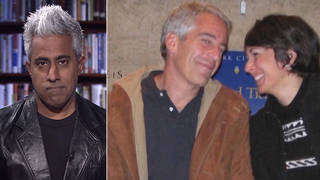
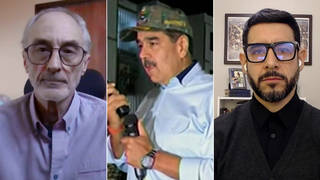
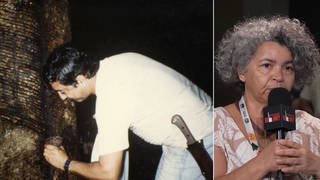
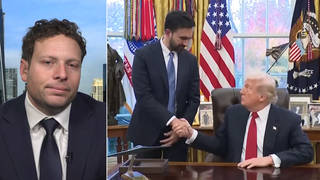





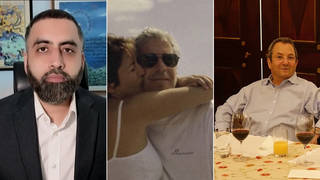

Media Options